Related Research Articles

Bajram Curri was an Albanian chieftain, politician and activist who struggled for the independence of Albania, later struggling for Kosovo's incorporation into it following the 1913 Treaty of London. He was posthumously given the title Hero of Albania.

Kachaks is a term used for the Albanian rebels active in the late 19th and early 20th century in northern Albania, Montenegro, Kosovo and Macedonia, and later as a term for the militias of Albanian revolutionary organizations against the Kingdom of Serbia (1910–18) Kingdom of Yugoslavia (1918–24), called the "Kaçak movement".
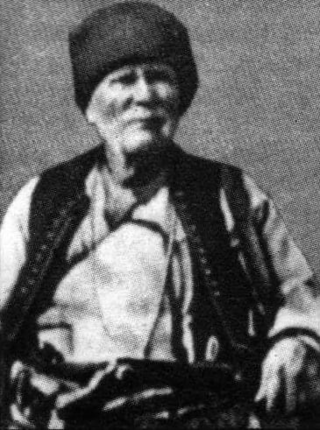
Idriz Seferi was an Albanian leader and guerrilla fighter (rebel). During his 56 year military career, he fought in 35 battles. A member of the League of Prizren and League of Peja, he was the right-hand man of Isa Boletini, with whom he organized the 1910 Uprising against the Ottoman Empire in the Kosovo Vilayet. After the suppression of the uprising, Seferi continued warfare, in the 1912 Uprising. In the First Balkan War, Boletini and Seferi rose up against Serbia, with whom they had previously been allies to during the 1910 and 1912 Uprisings, and continued to attack Serbian posts in the subsequent occupation and initial phase of World War I (1913-1915). In the second phase of the war (1916-1918), he led troops against Bulgarian forces.

Azem Bejta, commonly known as Azem Galica, was an Albanian nationalist and rebel who fought for the unification of Kosovo with Albania.
Riza Kryeziu (1847-1917), known as Riza Bey Gjakova, was an Albanian nationalist figure and guerrilla fighter, an influential bey in the Gjakova region, then part of the Vilayet of Kosovo, Ottoman Empire, and one of the activists of Albanian national movements of early 20th century.
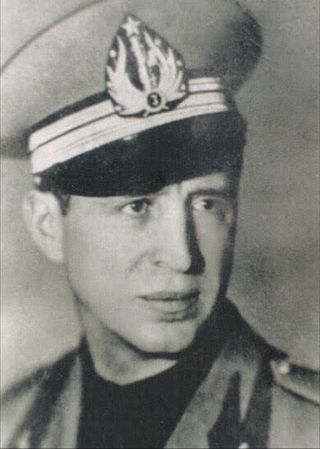
Ndok Gjeloshi was an Albanian army officer and Militia commander during World War II.

The Committee for the National Defence of Kosovo was an Albanian organization founded in Shkodër on 1 May 1918. It was mainly consisted of the political exiles from Kosovo and was led by Hoxha Kadri from Pristina. It existed in looser form since May 1915.

Salih bej Vuçitërni was an Albanian political figure and royalist.
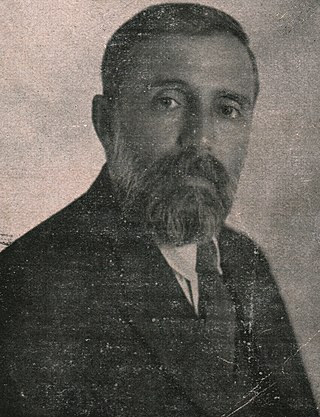
Kadri Prishtina (1878–1925), better known as Hoxha Kadri, was an Albanian political figure of the early 1920s.
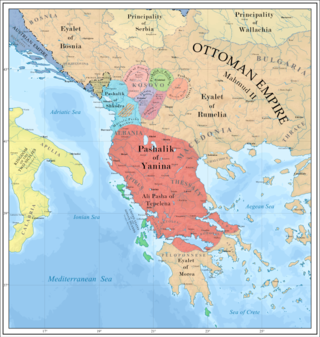
The Begolli family is an Albanian noble family, which rose to prominence in present-day Kosovo in the Ottoman era and were an influential feudal family in the region.
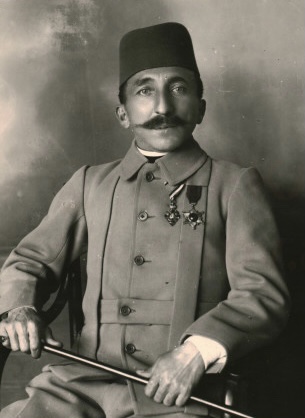
Hysni Curri (?–1925) was a Kosovar Albanian military figure and a prominent leader of the Kachak movement and the Committee for the National Defence of Kosovo.
The Neutral Zone of Junik (1921–1923) was a neutral demilitarized border area between the Kingdom of Yugoslavia and the Principality of Albania.
Asllan Curri (?-1925) was a member of the kachak movement in early 20th century in Kosovo and North Albania.
The Second Congress of Manastir was an Albanian congress held on 2–3 April 1910 in Manastir, back then Ottoman Empire, today's Bitola in the Republic of North Macedonia. It dealt with the challenges that the Albanian language and schools faced at the time within the context of the empire, and the platform to overcome them.
Zef Kol Ndoka (1883-1924), also known among Albanians as Zefi I Vogël, was an Albanian warrior and commander from the Shengji family from today's Fan Mirdita in Northern Albania.
Sadik Rama was a Kosovo Albanian kaçak guerrilla fighter who fought against the Serbian annexation of Kosovo in 1912. Following the Ottoman defeat, he continued to participate along Isa Boletini and Bajram Curri in the national revolt of 1913–14 in Llapushe. He joined the kaçak guerrillas in 1919 with support from the Committee for the National Defence of Kosovo. He fought alongside Azem Bejta during his lifetime.

Sopot is a village in the municipality of Kumanovo, North Macedonia. It is located near the Serbian border.
Shpend Dragobia was an Albanian warrior during the pre-Albanian declaration of independence period and later. He was the son of Bali Arif Bisheva, a member of the League of Prizren and fighter during the Albanian uprising of 1845-1862 against the German-born Marshal Mehmed Ali Pasha. Shpend Dragobia grew up to be a patriotic figure known for his wisdom, character and bravery.
Ismail Nikoçi (1876-1919) was an Albanian political activist from Gucia in present-day Montenegro and mayor of that town. He played a significant role in the defense of the national rights of the Albanian ethnic community in Plava-Gucia in the period from its annexation to Montenegro in the Balkans Wars to its final annexation to Yugoslavia in 1919.
References
- ↑ Anna Di Lellio, Robert Elsie (2009). The battle of Kosovo 1389: an Albanian epic. I.B. Tauris. p. 185. ISBN 9781848850941. OCLC 312626753.
- ↑ Sheradin Berisha (2004-10-21), Kryengritja shqiptare e vitit 1915 [The Albanian uprising of 1915] (in Albanian), Pasqyra, retrieved 2014-02-09,
Më 6 gusht 1914 konsulli austriak Karl, nga Durrësi njoftonte Ministrinë e Punëve të Jashtme në Vjenë "mbi fillimin e aksioneve kundër pushtuesve serb"nga Hasan Prishtina, Selim Batusha, Bajram Daklani, Qazim Begolli e Halim Deralla (djali i Mehmet Derallës-Sh. B), të cilët kishin me vete"lëndë plasëse dhe municion për mauzerët".
- ↑ Dëshmi historike dhe diplomatike që Serbia ishte okupatore e Kosovës (in Albanian), Kosova Sot, 2012-02-06, retrieved 2014-02-09,
Sekretar i (vëllai i Sami Pejës), kurse anëtarë të Komitetin ishin: Bardh Jusufi, Sali Gjuka, Isuf Veseli, Sadik Deçani, Naxhi Hoxhi Sadiku, Avdush Kastrati, Jahja Prishtina, Sadik Gostivari, Bajram Daklani, Lalë Perolli, Ragip Kojë Begolli, Qazim Begolli, Hamdi Zajmi, Niman Ferizi, Rrok Perolli, Tahir Zajmi, Kahraman Begolli, dhe Ibrahim Gjakova.